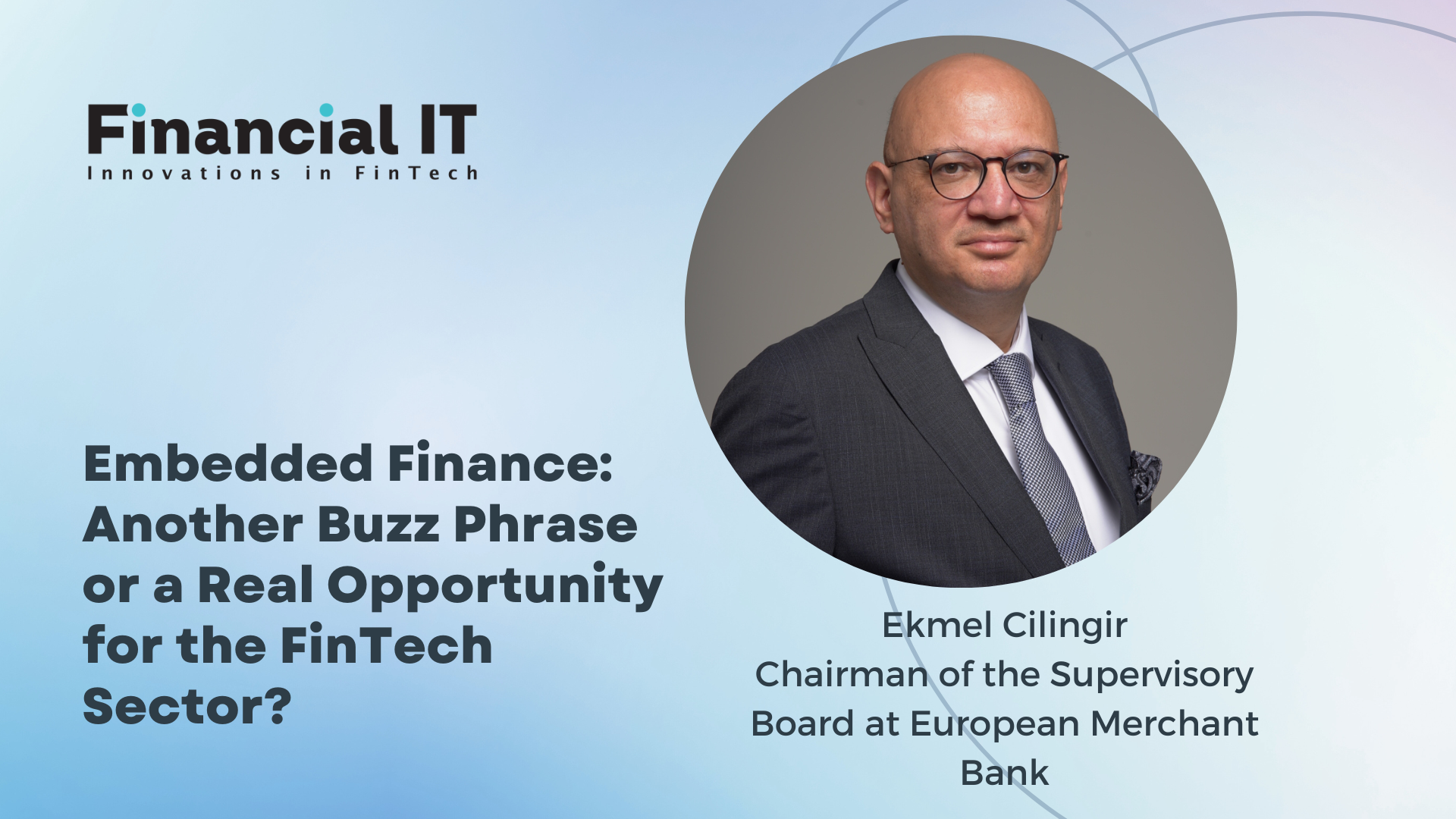Embedded Finance: Another Buzz Phrase or a Real Opportunity for the FinTech Sector?

- Ekmel Cilingir, Chairman of the Supervisory Board at European Merchant Bank
- 13.07.2023 04:30 pm #embeddedfinance
The FinTech industry is picking up speed, and is changing our understanding about financial services and their uses in many fields. One of the reasons for this change is embedded finance. This technology is subtly and significantly transforming entire sectors, as well as creating new opportunities. A study by Juniper Research revealed that the worldwide revenue generated from embedded financial services will surpass $183 billion by 2027. This impressive figure demonstrates significant growth from its 2022 value of approximately $65 billion – a remarkable increase of 182%. The report highlighted the fact that the primary catalyst behind this expansion is the integration of embedded finance solutions by non-financial enterprises, who are keen to enhance their product offerings. According to the CEO of Bond, Mr Roy Ng, consumers are now seeking to incorporate financial services seamlessly into their everyday lives, and they are no longer satisfied with limiting their options to traditional banks. Will FinTech be able to take advantage of this trend?
Exciting possibilities for non-financial enterprises
The research conducted on a sample of 2,555 adult Americans, titled “The Flywheel Effect: How Embedded Finance Can Help Brands Generate Millions in Revenue and Increase Customer Loyalty?”, revealed a significant demand for financial products offered by non-financial companies, particularly among individuals who are brand loyalists and frequent users of those specific products. For example, among gamers who consider the PlayStation to be their favourite brand, a staggering 79% expressed interest in a credit card that offers rewards for in-game purchases. Furthermore, a significant 75% of all the gamers displayed interest in an in-game account that would allow them to deposit money and utilise it for purchasing and selling virtual in-game items, as well as earning rewards for their game achievements and progression. Similarly, a substantial majority of fashion enthusiasts expressed their openness to obtaining an investment account offered by a luxury brand. Such an account would provide them with the convenience of easily investing in the brand’s stock and other assets.
Another intriguing finding from the research, known as “The Flywheel Effect”, is that consumers who directly access financial services from specific brands report an increase in their spending with those brands, compared to their pre-financial service usage.
Embedded finance has already resulted in numerous success stories among non-financial enterprises. For example, Toast, a company that specialises in providing restaurants with point-of-sale hardware, has formed a strategic partnership with WebBank. The aim of this collaboration is to offer loans ranging from $5,000 to $250,000 to Toast’s clients. These loans can then be utilised by the restaurant owners for various business purposes.
When purchasing a car online from Tesla, customers have the opportunity to secure a cost-effective loan directly from the car seller. Tesla Motors Ltd, which operated as a broker in the UK, provides this financing option.
In addition, Amazon offers the EMI (Easy Monthly Instalments) service to its buyers, providing a convenient financing option. Customers can easily request, acquire and repay loans directly on the platform, while browsing and purchasing products. This embedded finance feature allows consumers to enjoy greater flexibility in their payment options, making it more accessible for them to manage their expenses and to make purchases on Amazon.
Emerging trends in embedded finance
From my perspective, embedded finance is poised to become the standard in the financial services sector, while reshaping our interactions with financial offerings for the foreseeable future. Let’s delve into three noteworthy trends that deserve our further attention.
Buy Now, Pay Later (BNPL)
BNPL serves as a method for individuals to purchase goods on credit and defer the payment to a later date. This payment method significantly enhances the accessibility to online shopping and e-commerce platforms.
By using BNPL as an embedded finance product, businesses can obtain a competitive edge by capturing missed sales opportunities and extending their invoice payments, thereby improving their cash flow management.
According to globaldata.com, BNPL is estimated to reach $309.2 billion in 2023, displaying a compound annual growth rate (CAGR) of 25.5% during the forecast period. The accelerated growth of online payments, driven by the increasing consumer preference for online shopping, is a key factor contributing to the expanding BNPL market.
APIs
APIs have not only facilitated exchanges of data among the various stakeholders engaged in financial transactions, including banks, third-party providers, websites and consumers, but have also revolutionised the process of developing financial apps and services. This has resulted in faster, simpler and more cost-effective solutions than ever before.
As stated by Nordic APIs, open banking stood out as a prominent and highly-discussed topic within the API industry in 2021. The forecast suggests that a substantial number of users – specifically, over 132.2 million – will have embraced open banking by the year 2024.
Digital Wallets
A digital wallet empowers the user to conveniently store, manage and conduct electronic transactions with ease. Its versatility can be extended to various applications, such as facilitating in-house banking for businesses, powering crowdfunding platforms, or facilitating transactions in online and e-commerce marketplaces without leaving the platform.


























